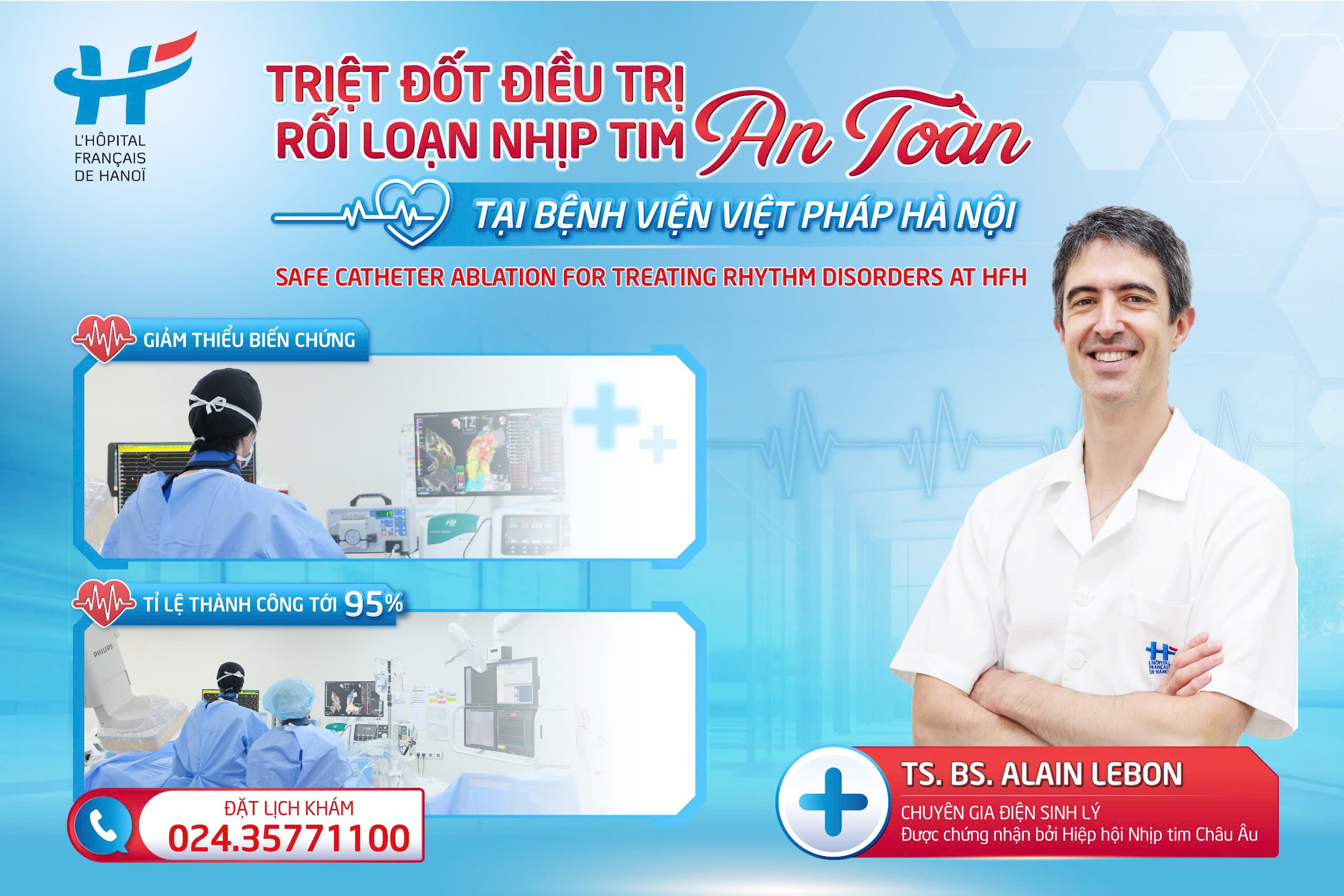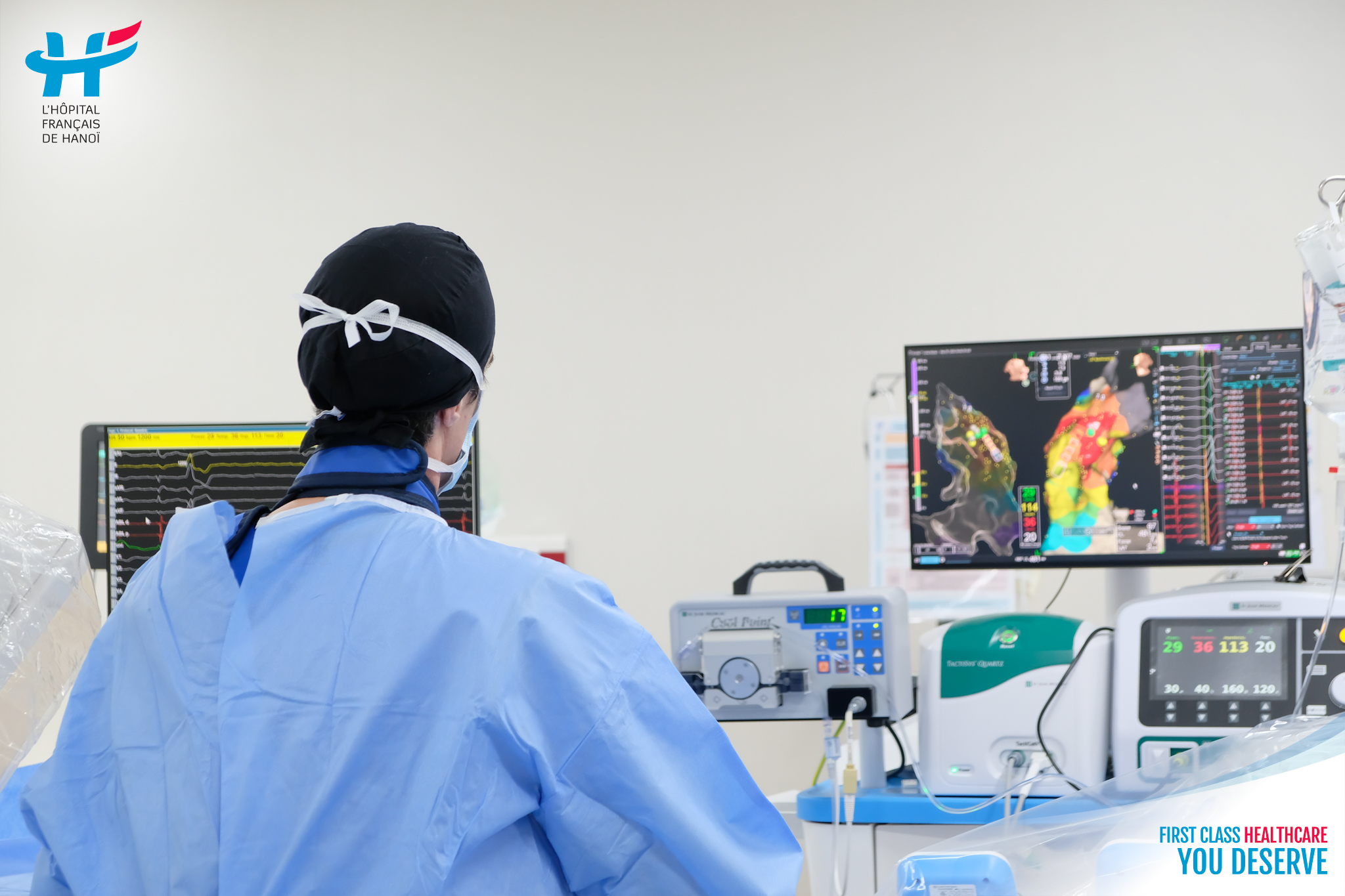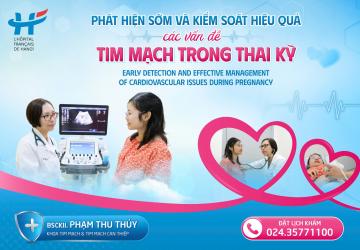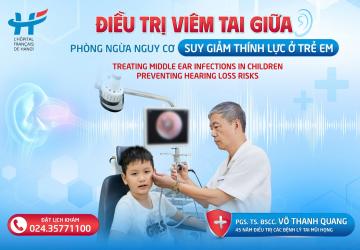News - Mon, 10/07/2024 - 09:56
SAFE CATHETER ABLATION FOR TREATING RHYTHM DISORDERS
Last update 10/07/2024 - 11:35
Depending on the arrythmia, up to 95% of patients have the chance to be completely treated without the need for lifelong antiarrhythmic medication.

Heart rhythm disorders occur when there is an abnormality in the generation or conduction of electrical impulses in the heart chambers, causing the heart to beat too fast, too slow, irregularly, or lose its normal rhythm.
To treat these conditions, patients can take antiarrhythmic drugs, undergo catheter ablation, have a pacemaker implanted, or even undergo surgery. Among these options, catheter ablation provides a safe and definitive treatment.
Catheter Ablation – A medical breakthrough in treating rhythm disorders
Catheter ablation is a minimally invasive procedure. A catheter is inserted into the heart to reach the area causing the arrhythmia. Radiofrequency energy at the catheter tip generates thermal damage to destroy the diseased heart tissue.
This method is highly safe because the heat produced by the high-frequency energy at the catheter tip can spread through the full thickness of the heart, allowing the doctor to easily control the extent of the damage, reducing the impact area and minimizing the risk of complications.
The continuous development of electrophysiological mapping techniques enables the heart structure to be reconstructed in high-resolution 3D images, facilitating precise diagnosis and intervention. Doctors can observe details with millimeter-level precision, clearly identifying the electrical mechanism causing the disorder.

Today, all types of heart rhythm disorders can be treated with catheter ablation, achieving much higher success rates compared to medical treatment. The balance between the benefits of the procedure and the potential complications has made ablation a first line treatment for heart rhythm disorders.
In the past, catheter ablation was typically recommended only after medication was no longer effective or when the patient experienced drug side effects. However, doctors today may recommend ablation from the outset, based on careful consideration of the method's benefits and potential risks for the patient.
According to guidelines from the European Heart Rhythm Association, ablation has been recommended as a first-line treatment for atrial flutter since 2004, for AV nodal reentrant tachycardia (Bouveret) since 2017, and for atrial fibrillation as of this year.
Mitigating complications and increasing Success Rates to 95%
In Vietnam, some patients are still quite apprehensive about undergoing ablation due to fear of possible complications. Understanding this concern, at the recent seminar on Comprehensive Treatment of Rhythm Disorders and Stroke Prevention at Hanoi French Hospital, Dr. Alain Lebon—Cardiology and Electrophysiology Specialist certified by the European Heart Rhythm Association—addressed this issue in detail.
Dr. Lebon stated: "The safety level of catheter ablation is continuously improving. Currently, depending on the arrhythmia, complications occur in less than 5% of cases."

Explaining the safety control measures for the procedure, Dr. Lebon mentioned that the most common complication is bleeding from the blood vessel in the thigh. To prevent this, at Hanoi French Hospital as well as major medical centers in France, doctors perform a venous puncture and guide the catheter into the heart under ultrasound guidance.
To prevent pericardial effusion, the most important factor is the expertise and experience of the doctor. Additionally, 3D electrophysiological mapping allows for identifying vulnerable areas, and the force at the catheter tip is controlled in real-time. This ensures the catheter makes adequate contact with the tissue to create the lesion without causing complications. Transesophageal echocardiography also reduces the risk of pericardial effusion for the riskiest step, when the ablation site is on the left side of the heart.
In conclusion, with advanced equipment and the expertise and experience of cardiology specialists, catheter ablation offers a safe, effective, and controllable solution for completely treating heart rhythm disorders with minimal complications.



